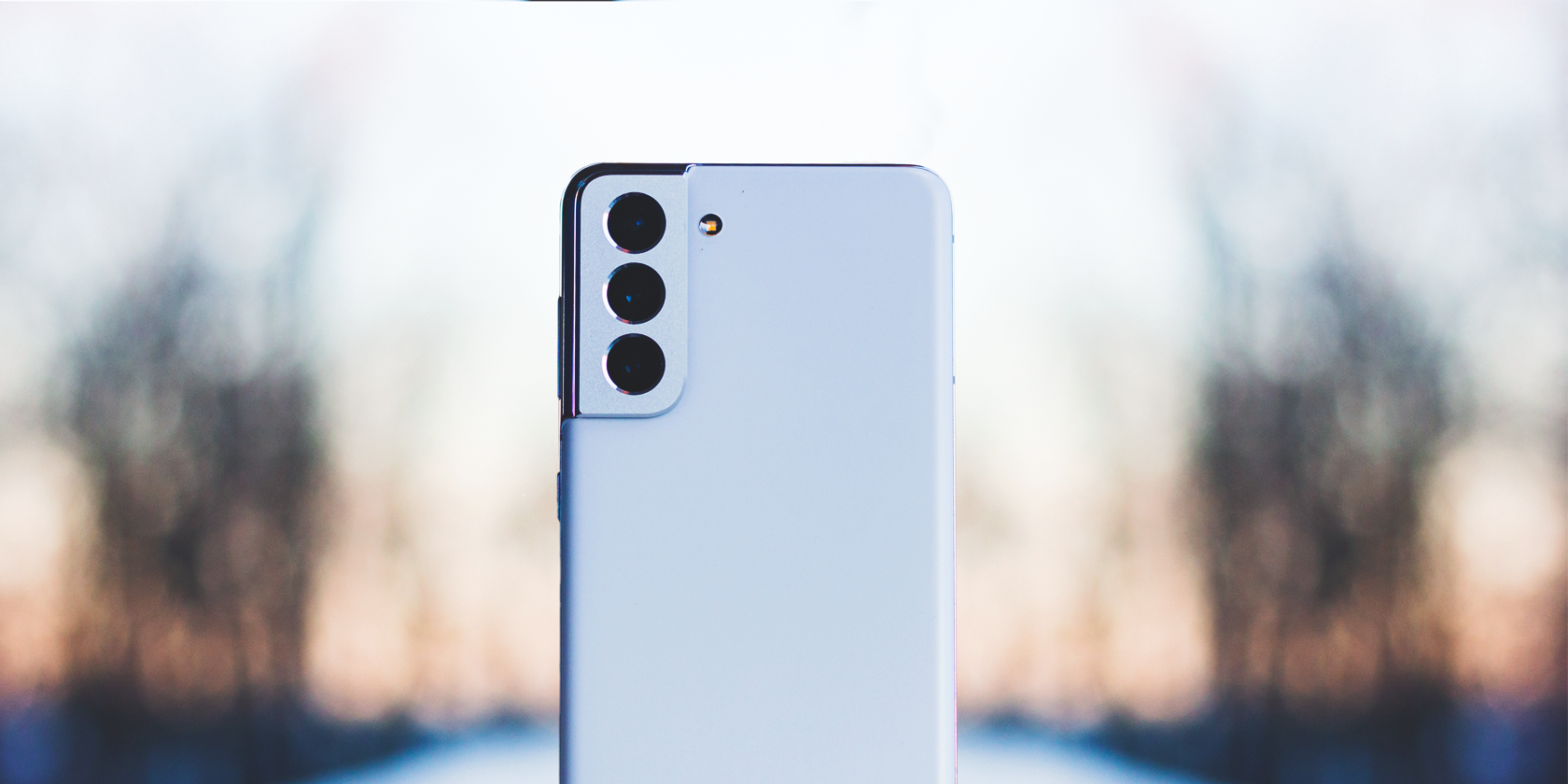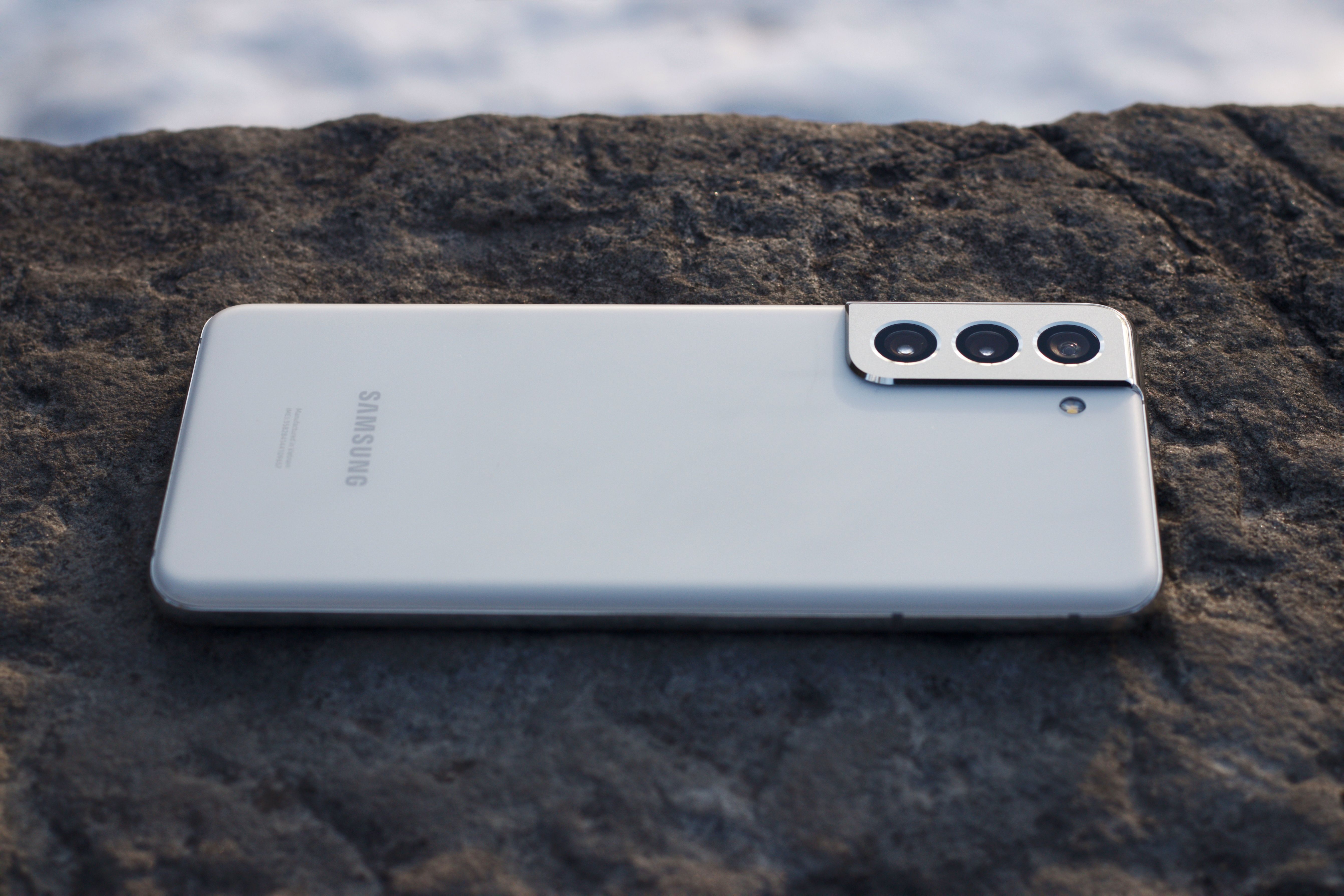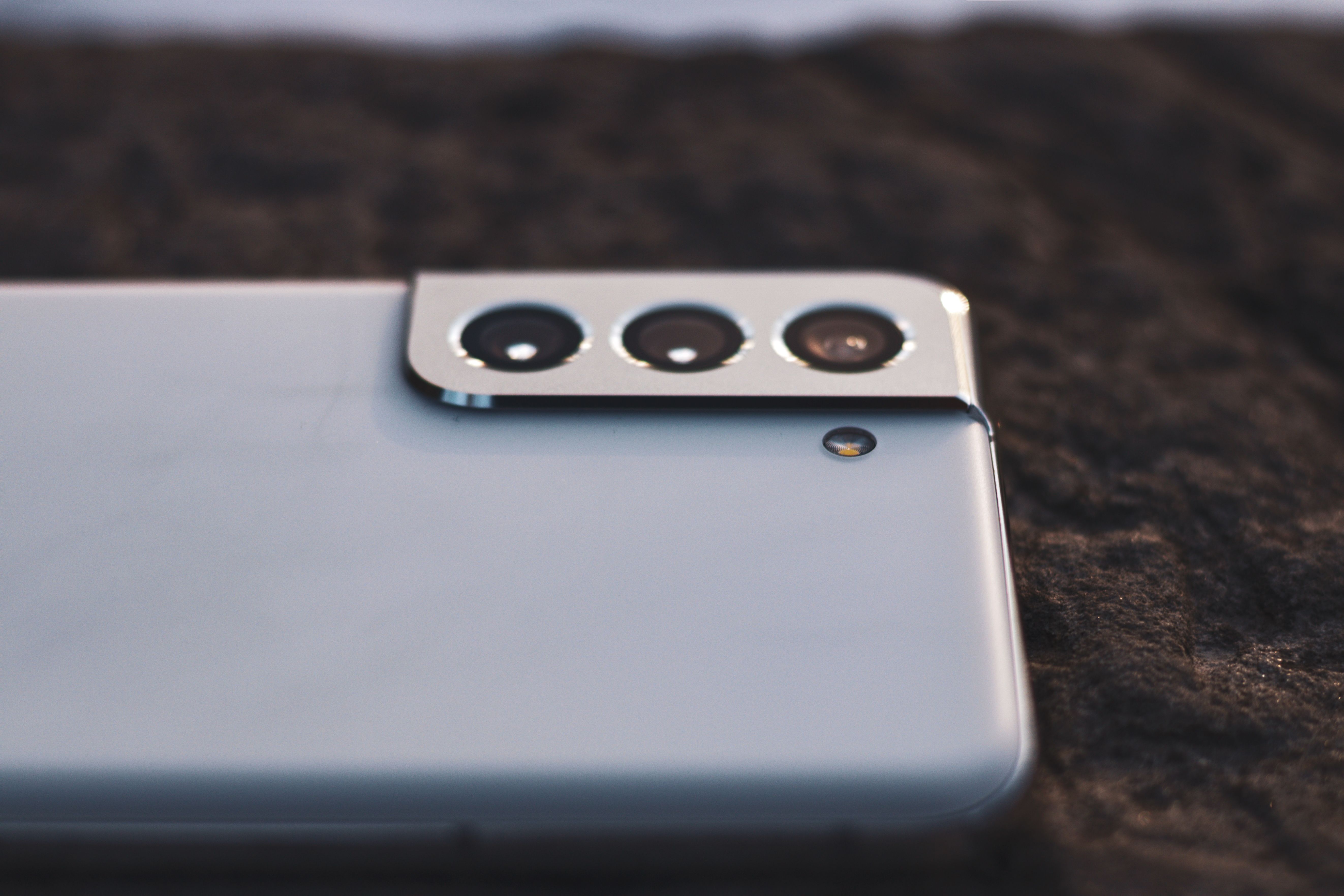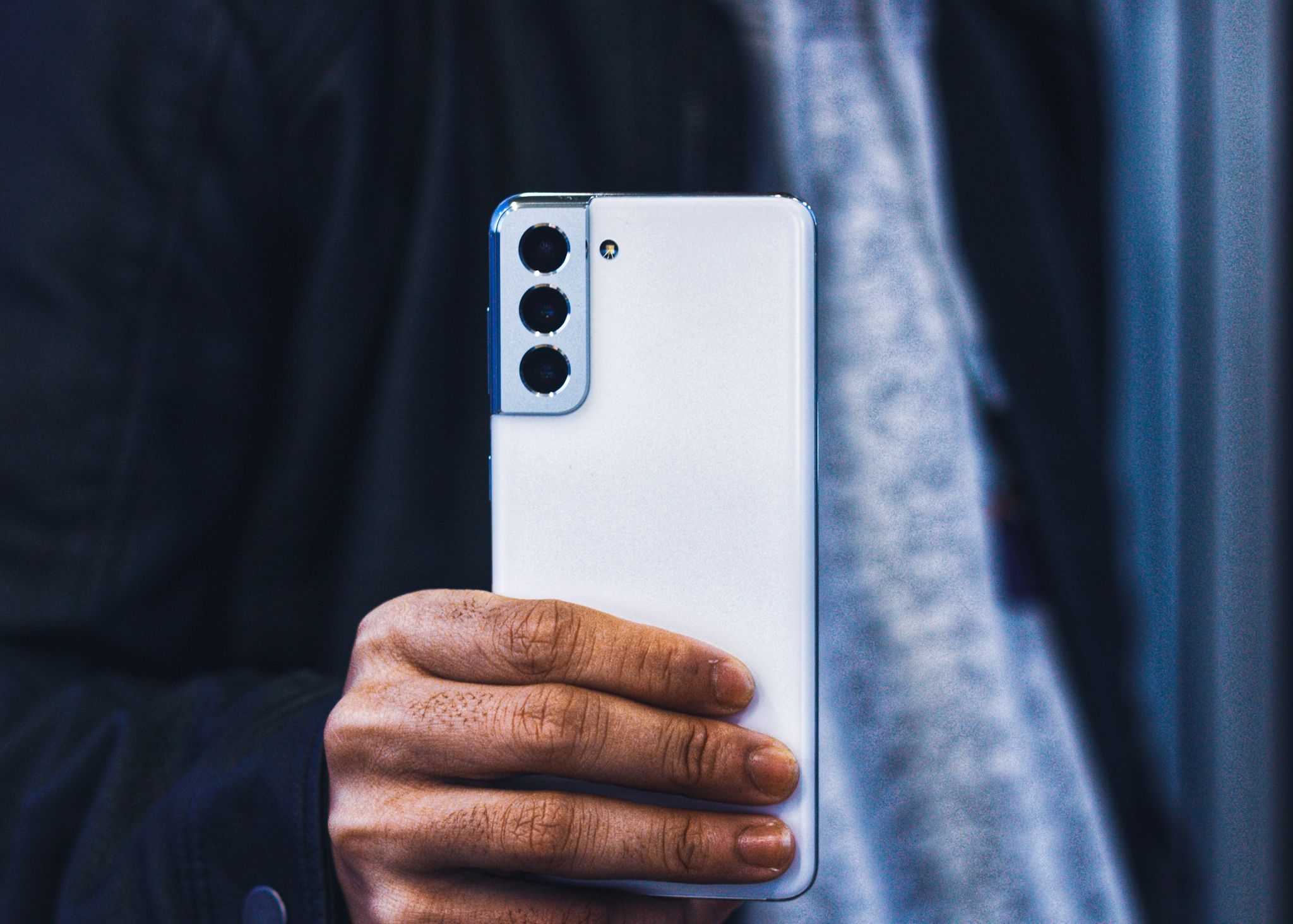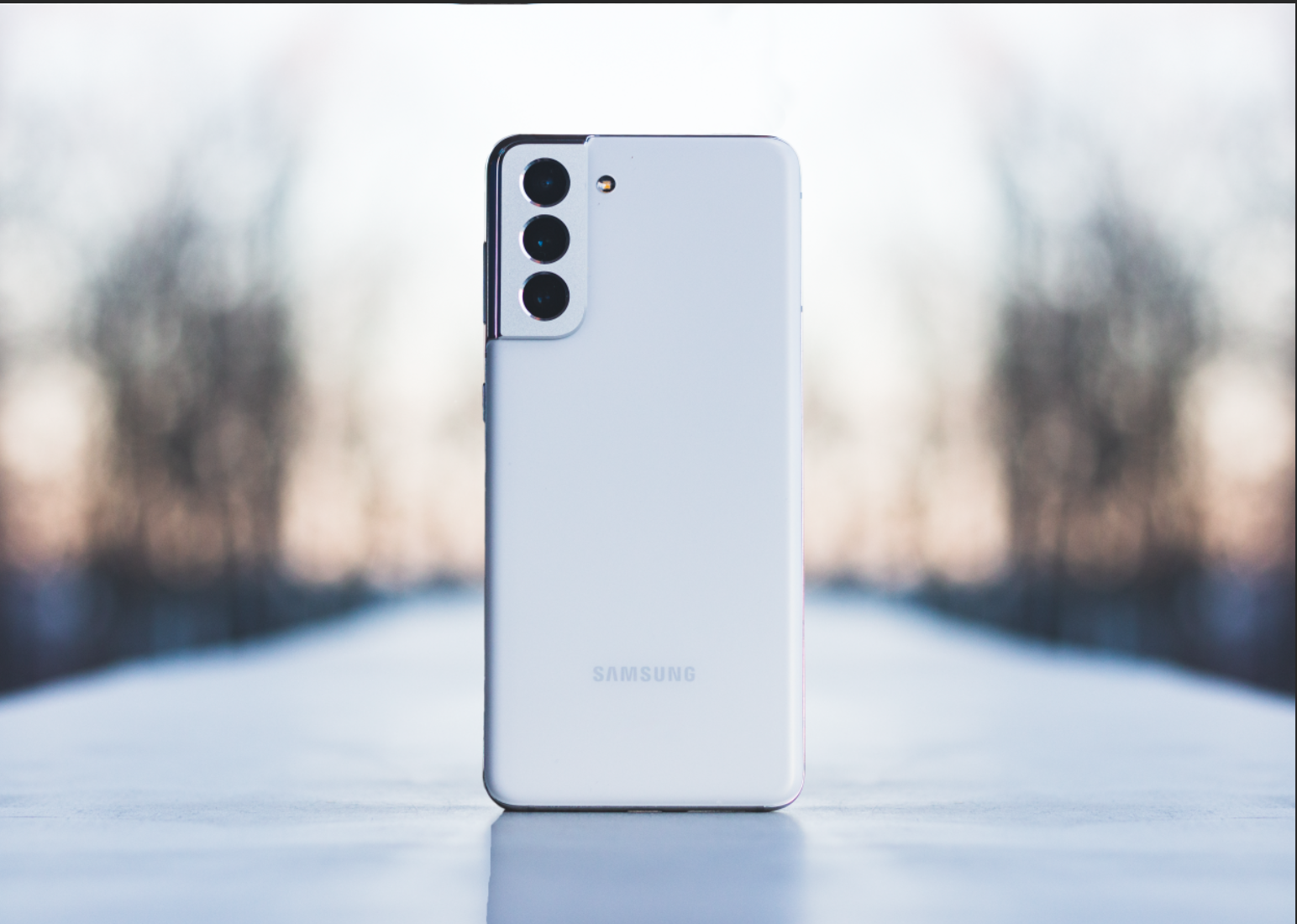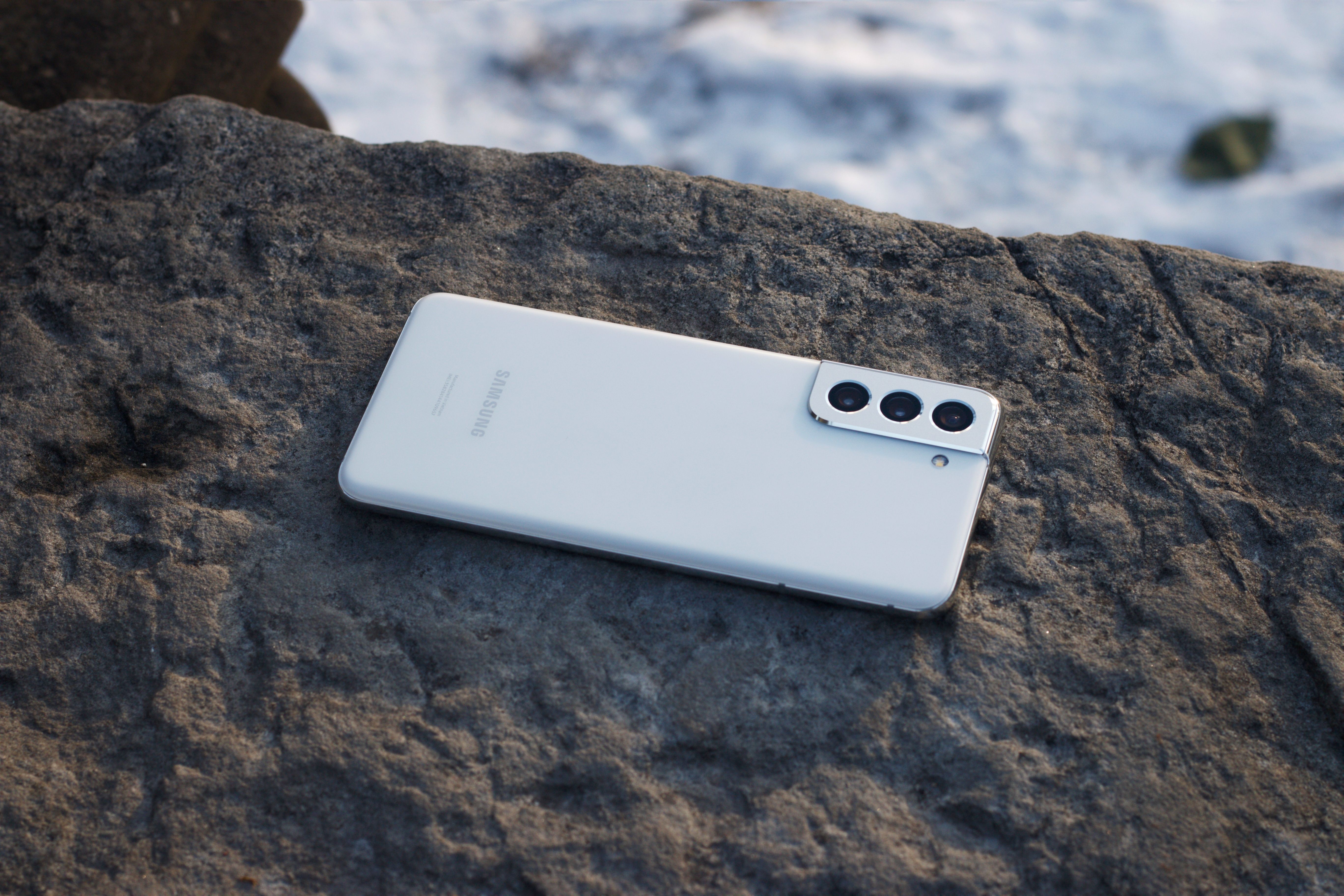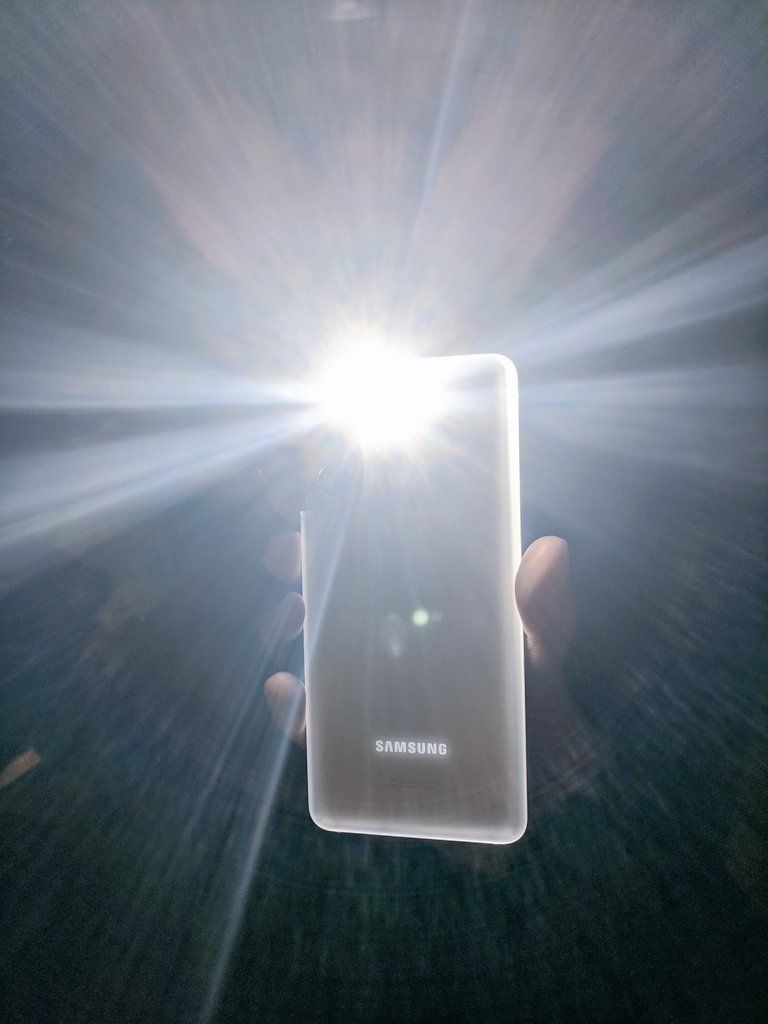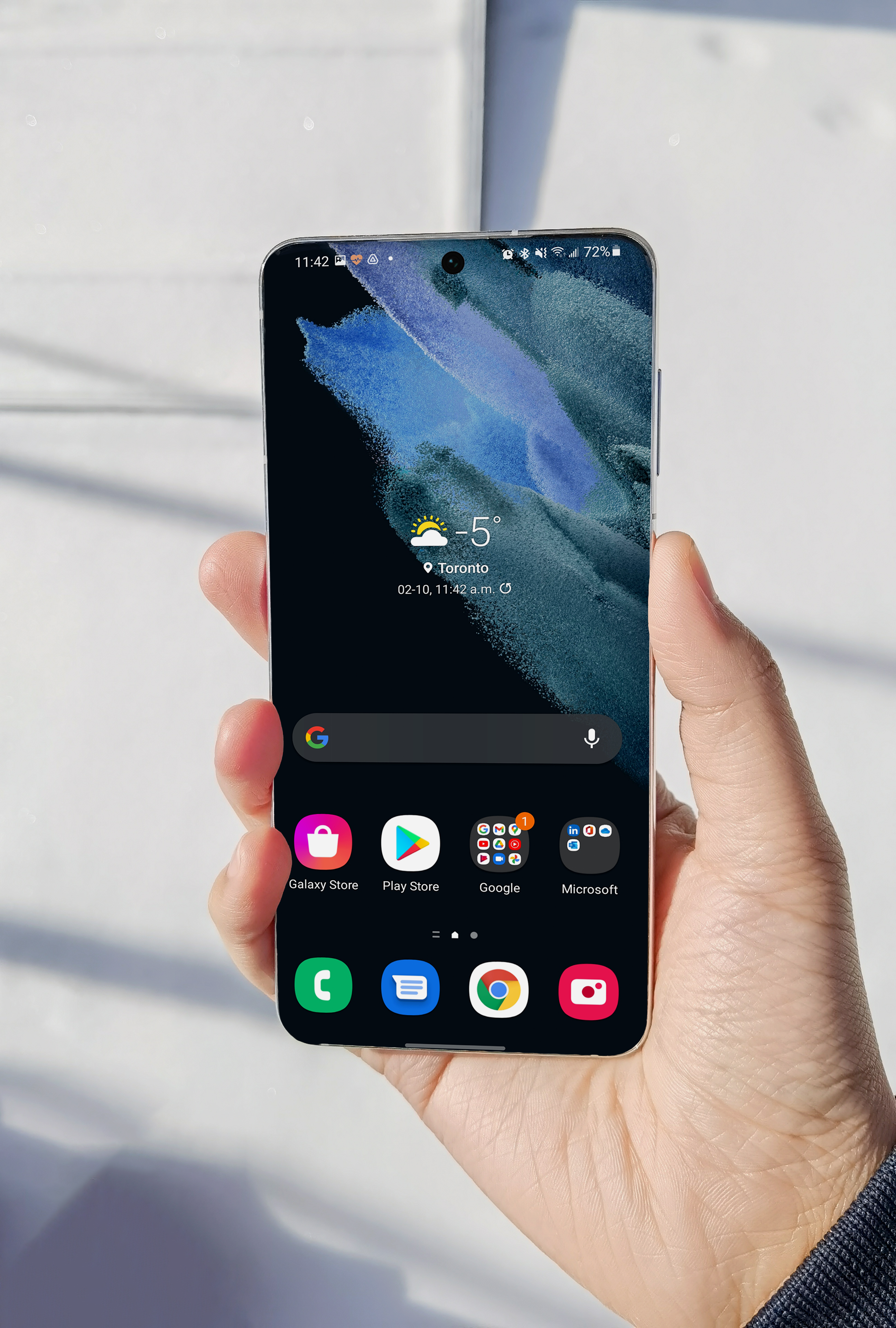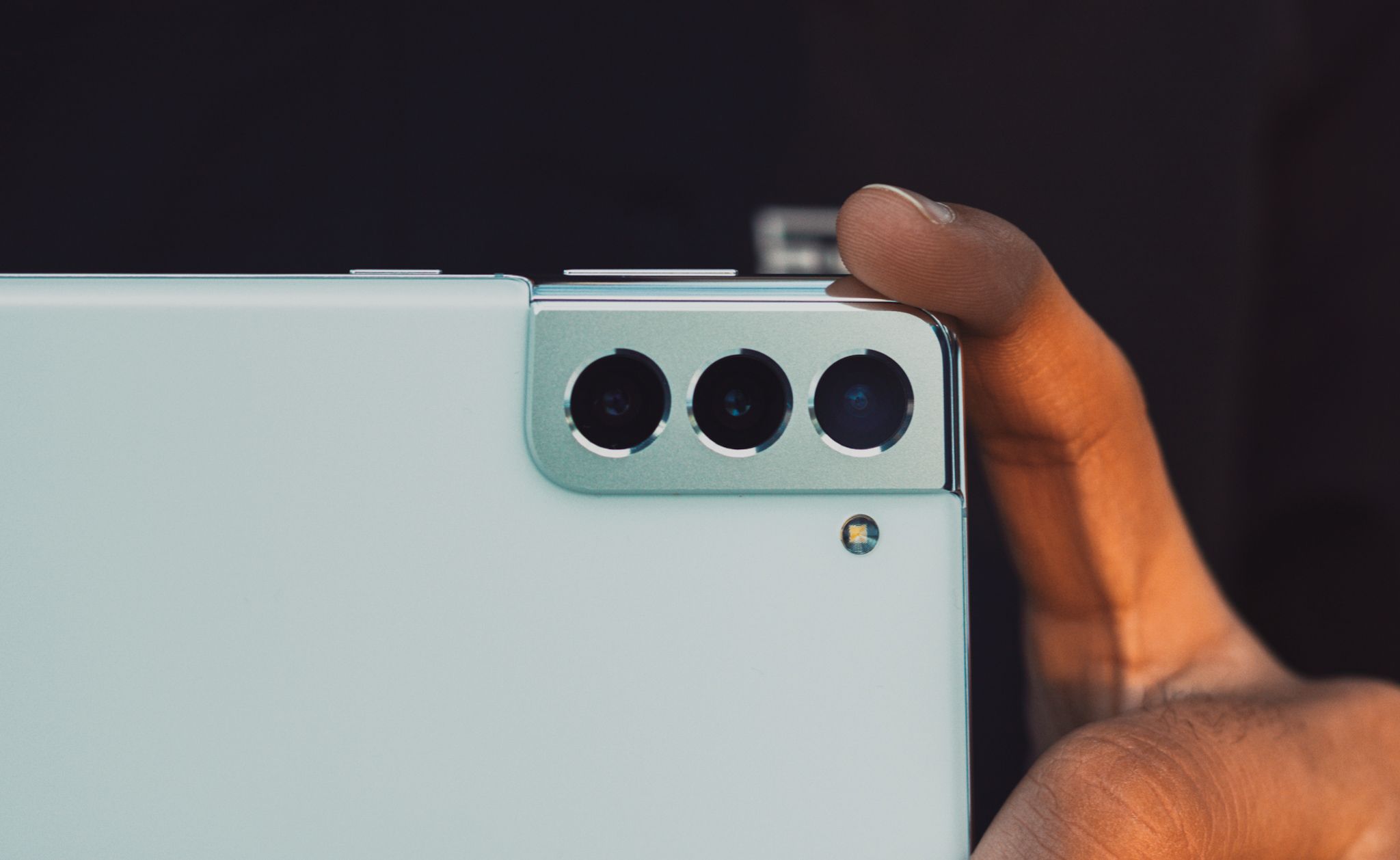Samsung Galaxy S21 5G
The Galaxy S21 offers a competitive balance of performance, design, and camera capabilities while being $200 cheaper than its predecessor, the Galaxy S20.
- Brand: Samsung
- SoC: Exynos 2100/ Snapdragon 888
- Display: 6.2-inch, 1080 x 2400
- RAM: 8GB
- Storage: 128G/256GB
- Battery: 4,000mAh
- Ports: USB-C
- Operating System: Android
- Camera (Rear, Front): 12MP f/1.8 main, 12MP f/2.2 ultrawide, 64MP f/2.2 3x telephoto, 10MP f/2.2 selfie
- Great design (especially with the new camera module design on the back)
- Flat display
- Good cameras
- Lacks an SD card slot for expandable storage
- Bloatware is still prevalent
- No more MST (Magnetic Secure Transmission)
Since the launch of Apple's iPhone X back in 2017, smartphone makers have steadily increased the prices of their phones with every launch. Last year Samsung's base S20 started at $999 with its S20 Ultra costing $1399. This year Samsung dropped all of its flagship prices down by $200, with the base S21 costing $799.
The Galaxy S21 is Samsung's answer to the highly competitive premium mid-range market. Out of the entire lineup, the S21 is the most polarizing, because it seems more of a successor to the Galaxy S20 FE than it does to the original S20. Thankfully, that's a good thing.
Design
The design of the Galaxy S21 is one of the areas Samsung intentionally spent most of its time perfecting. Coming from the bland slab that was S20, the new design of the S21 is strikingly beautiful. The new metal camera bump gives off the illusion that the phone was machined from one solid piece of metal, and it does look well polished.
The only minor annoyance would be the volume rocker being above the power button, making it a little hard to reach with one hand. The mirror-like finish of the metal sides makes the phone easy to grip.
On the bottom, you'll find the SIM card slot, which does not support microSD anymore, and the USB-C port for charging and data transfer. Like the S20, there is no headphone jack.
The big elephant in the room is that back cover. The matte-polycarbonate back is one aspect where Samsung cut back on to save on costs, and to be frank, unless you're directly comparing this to another glass phone, you won't notice it. The only way you will know that the back is plastic and not glass is if you knock on it (but who knocks on their phones?).
It's fair to say the plastic back is a downgrade from the S20 from the year before, but it's such a minute thing to sway your buying decision. The plastic back is technically more durable and should allow for better shatter-resistance with the caveat that you will get scratches more easily. Overall, the finish on the back mimics glass so well you really won't notice it, but we recommend a case or a skin to help protect it from scratches.
The Phantom White color I have here looks good when the light hits it. One fun Easter egg with the plastic backs of the S21 is if you turn on your flashlight, the back of the phone will glow along with the Samsung logo; it's a nice touch.
Onto the front, Samsung has done away with the curved screen; this is a great change. You will encounter little to no accidental touches. The bezels have also shrunk a bit giving the device an 87% screen-to-body ratio. The front hole-punch is centered again like the S20, so it should look familiar. Overall, Samsung's approach to the S21's design is a welcome addition, especially considering the blandness of last year's initial launch of the S20 series.
Performance and Battery-Life
The performance of the S21 is superb. The Snapdragon 888 or Exynos 2100 coupled with the 8GB of RAM makes this a true flagship device. The RAM is 4GB less than last year's S20, but the differences between 8GB and 12GB don't affect the day-to-day performance but will affect the longevity of performance down the road.
Since the S21 series this year has done away with MicroSD card expansion, we recommend you pay the extra $50 to upgrade your device to the 256GB variant if you have a ton of files and photos, but you can always use the USB-C port to plug in a flash drive.
Samsung also removed MST (Magnetic Secure Transmission) this year which previously allowed you to use Samsung Pay with credit card terminals that didn't support NFC. This means you won't be able to use Samsung Pay at those terminals anymore.
The unit I tested is the international Exynos variant, and this device has no problems keeping multiple apps running, gaming with little to no frame drops, all without significantly draining the battery life.
You should note that the Exynos 2100, while a major improvement from the Exynos 990, is still behind the Snapdragon equivalent in many ways; the Snapdragon chip overall still performs better, runs cooler and sustains performance longer than the Exynos 2100. The Snapdragon variant of the S21 will only be available in the US and China while every other market will get the Exynos 2100. You can find all the nitty-gritty details of Samsung's Exynos's 2100 compared to Qualcomm's Snapdragon 888 but in day-to-day use, you won't notice a huge difference in performance.
The UI is snappy and well optimized, but the prevailing issue with Samsung's skin on top of Android is those preloaded bloatware apps that take up storage for no reason. This device came preloaded with Facebook, a carrier app, and at least a dozen of Samsung's apps, which have ads. Yes, ads on a flagship device in 2021. This is one of the pitfalls of the Galaxy experience; it takes away from Samsung's incredible overhaul of One UI 3.1.
One UI 3.1 is one of Samsung's cleanest software to date; the entire UI feels streamlined and organized, and the inclusion of Google's Discover Feed makes this the most stock-like Samsung software experience ever, for what it is.
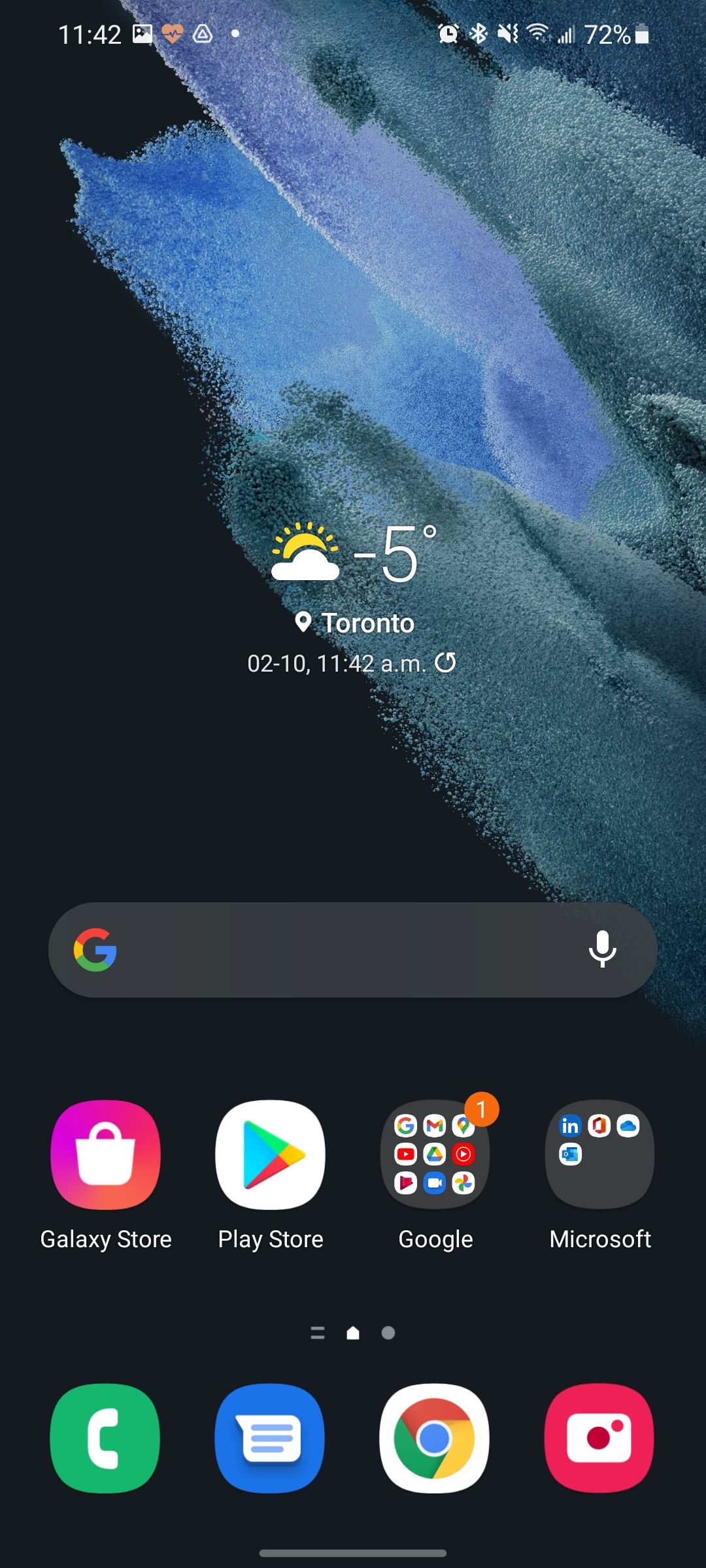
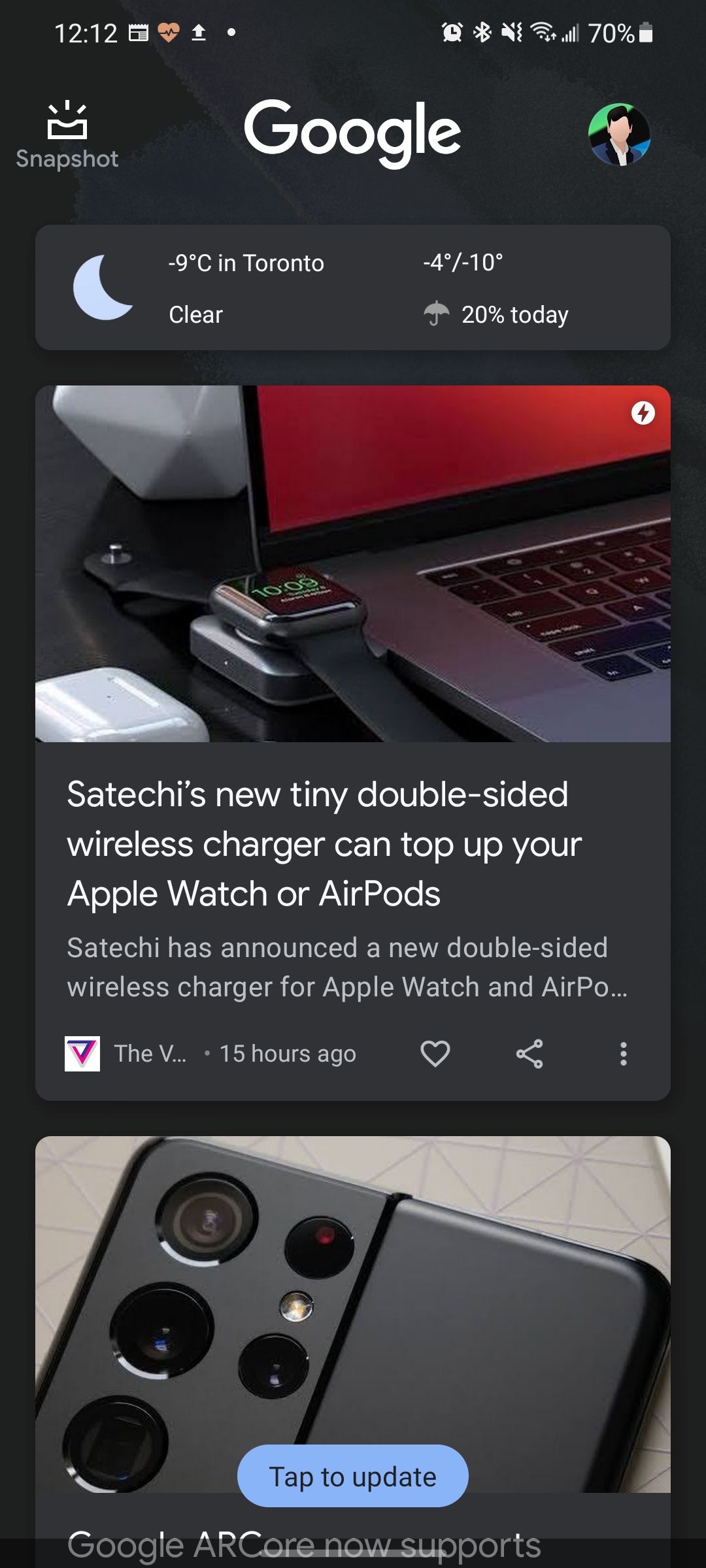
The display panel on the Galaxy S21 is a huge factor in making One UI feel so fluid; the new adaptive refresh rate can go all the way down to 48hz and back up to 120hz based on your usage. The adaptive refresh rate is a good step up from last year's devices since it helps preserve battery life.
The display is no longer a 1440p panel like previous Samsung Galaxy S devices; Samsung has scaled back to a 1080p display to save costs, but all of Samsung's flagship phones from last year only supported 120hz at 1080p so you shouldn't notice a difference at all.
As mentioned, the Galaxy S21 also flattened the display this year, and this is a great change. It's the same 6.2-inch size as the Galaxy S20 but now with little to no accidental touches when using it one-handed. The bezels have also been streamlined, having a uniform border around the panel with the chin being ever so slightly thicker than the top and side bezels.
The AMOLED display has vivid punchy colors with deep blacks. It's great for watching movies, playing games, and just general day-to-day tasks. The in-display fingerprint scanner is also back, but this time it's slightly larger, and faster than the S20's fingerprint scanner which is great for quickly unlocking the phone with or without a mask. All this to say, you won't be disappointed having this display at this price point.
As for the battery life, the S21 has a sizable 4,000mAh cell that should get you through a full day of use with little to no issues. While the battery life is good, you can certainly exhaust it in a day, especially if you're doing heavy tasks like gaming and taking videos.
In our testing, the device averaged 5-6 hours of screen-on-time with most days having at least 20% left—this is with the screen set to adaptive 120hz, maximum brightness, and all of bells and whistles (Always on Display, Bluetooth devices) enabled.
It's safe to say you're not going to be disappointed with the performance and battery life of the Galaxy S21. This is one of the areas Samsung didn't compromise on, and it goes a long way in keeping this phone good for at least 2-3 years of use.
Camera
The camera system on the Galaxy S21 is nearly identical to the Galaxy S20; the S21 has a 12MP f/1.8 main, a 12MP f/2.2 ultrawide, a 64MP f/2.2 3x telephoto, and a 10MP f/2.2 selfie camera. On a hardware level, this is essentially the Galaxy S20, but where the real changes are is in the software.
Samsung has a bucketload of different camera modes and features baked into its stock camera app, which are surprisingly useful. Sure there are still gimmicks like the AR Doodle and 8K video, but you'd be hard-pressed to say Samsung hasn't done a good job here.
Things like Single Take and Director's View are great for utilizing all 4 cameras on the device. Single Take works well for taking quick photos and videos since it records up to 10 seconds of video with all the cameras being able to capture different angles. Director's View is similar, but with more emphasis on video. You get a preview of all 4 cameras, and you can actively switch between all 4 of them while recording. In the future, if the device could capture different streams of video using this mode, it can better be utilized by content creators.
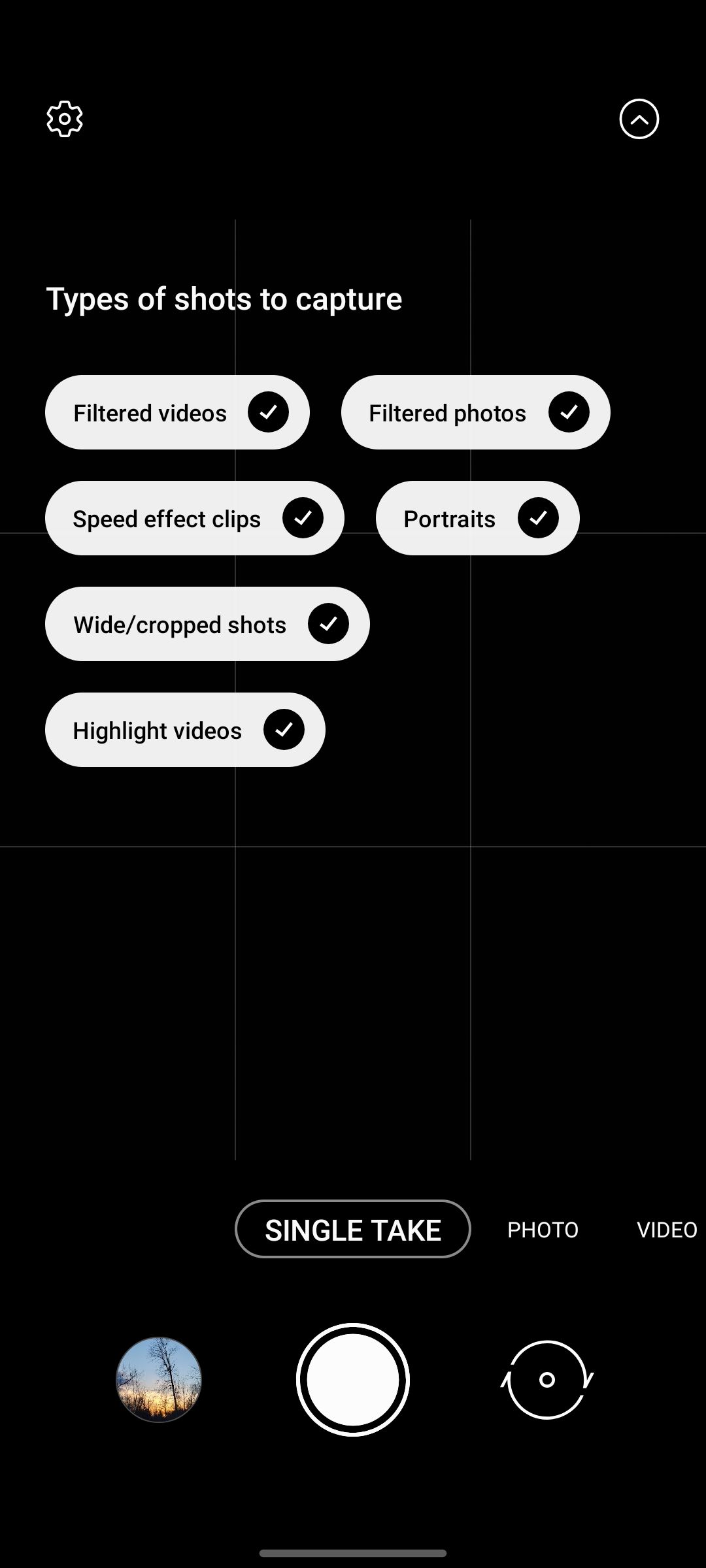
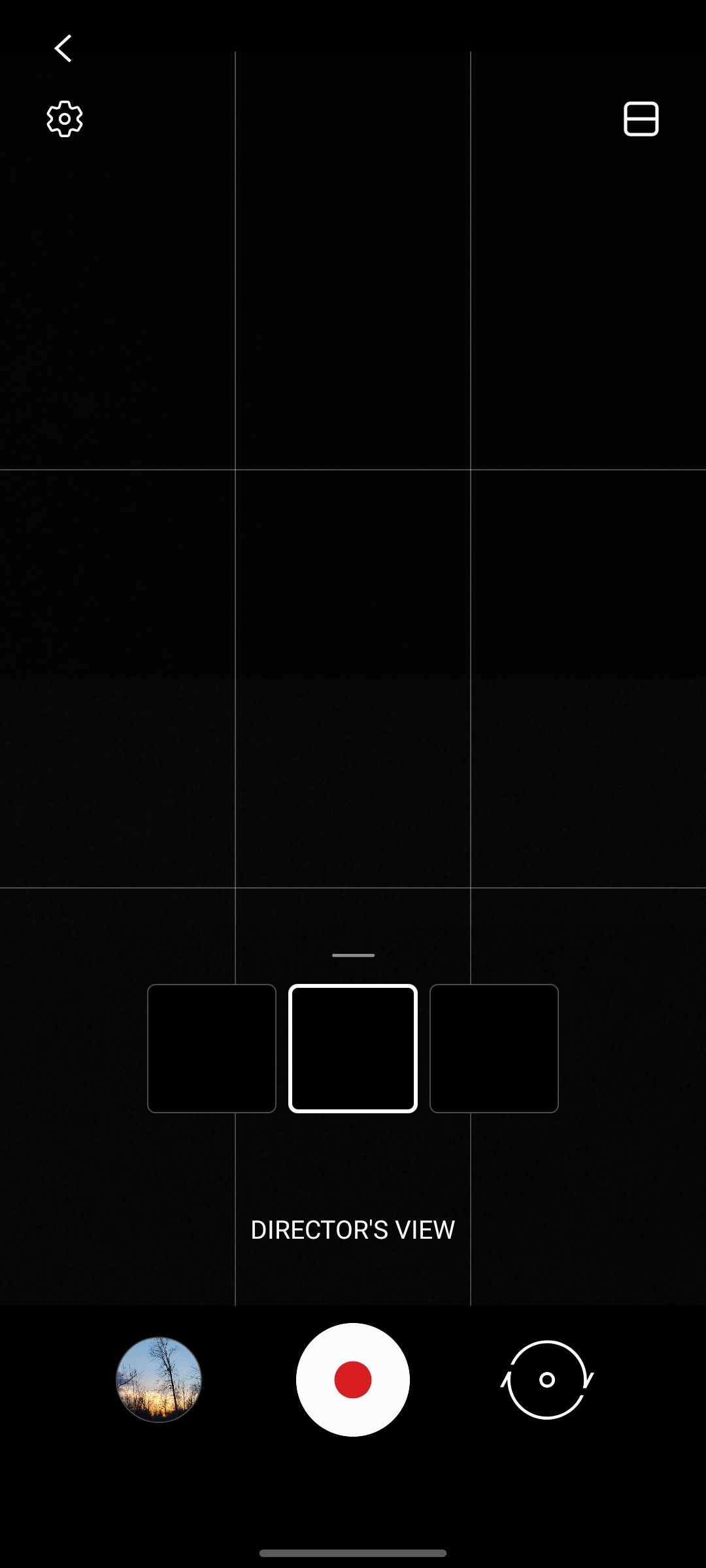
Samsung finally (finally!) lets you turn off all face smoothing and beautifying filters, and the results for portraits and selfies are very impressive.


In my testing, I left the device in Auto for every photo, and the S21 did a decent job balancing color, sharpness, and contrast. Sometimes using the 64MP telephoto meant images would be overblown in harsh lighting conditions, but all three cameras here do produce consistently good photos.









Video on the S21 is also stunning. The OIS (Optical Image Stabilization) on the main and telephoto lenses as well as the ultrawide's 120-degree field of view make this camera system stellar for stable video. Samsung now includes the ability to record in HDR10+ video as well, but just like 8K video, you're better off sticking to 4K.
Compared to S21 Ultra, you're mainly losing out on a better zoom range and the ability to take macro photography with the ultrawide camera, but comparably the regular S21 produces similar (if not identical) results to its larger brother.
The telephoto has 3x optical and 30x digital zoom, while the S21 Ultra sports two telephoto cameras which are a 3x optical and a 10x optical, going up to 100x digital. Of course, the 30x on the Ultra will give you a much better result than the regular S21, but unless you're really into zooming, the S21's 3x optical range is sufficient.



You won't find anything groundbreaking with Samsung's camera system here, but what you're getting is a great everyday camera that will produce consistent results without fail.
Should You Buy the Galaxy S21?
Overall, Samsung's entry-level flagship for this year is a great addition to its lineup. The S21, for the most part, has made reasonable compromises that make this device suitable for many people, especially considering the price. If you're someone who is looking to get a device that will give you incredible performance, decent battery life, and a consistent camera experience—all within a sleek, unique design—the S21 really is one of the best price-to-feature phones released thus far.

